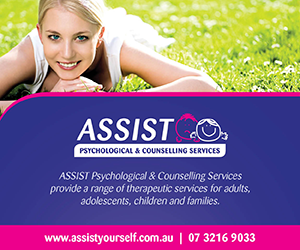AS Aussie teens get back to school for this year’s final term, for some the most important in their education, it is clear this generation is different.
Some kids are clean-cut, others scruffy, the variety of the student outfit an eternal hallmark of Australian schooling. But, as we approach 2015, most teens now accessorise with a mobile device, using social media to converse with their peers and the world, round the clock.
Schoolyard interactions crucial to our development — and especially for building resilience — now continue long after kids have left the gate. Some will enjoy an artificial, extroverted rush 24 hours a day, while others, regrettably, will be ostracised or bullied relentlessly, in a community that is all too often alien to their parents. Home time, and sleep, no longer offer relief for the developing brain.
There is, as there has always been, peer pressure to fit in — in terms of personal style, body image, attitude and beliefs. Yet, unlike for previous generations, that pressure — internal and external — comes from a much wider range of sources, all online and interactive.
Make an ignorant or innocent mistake, perhaps just a fashion faux pas, and chances are it will go viral, threatening to remain in circulation forever. Some will navigate these obstacles without damage, but the journey to supposed maturity, the traditional celebration of 18th and 21st birthdays, is almost irrelevant to the young pioneers of a new world that is interconnected yet isolating, intimate yet publicly broadcast.
If this landmark shift in relationships and communication seems extraordinary, factor in alcohol, drugs, sex and mental illness, and you can see how life for generation Y can get turbulent. With this week marking Mental Health Week, much attention is being focused on how to ensure this generation becomes a happy and productive one.
Almost half of all Australians will experience mental illness at some point in their lives; one in five are affected now or have been in the past 12 months. The latest available youth-specific data shows 14 per cent of children and adolescents aged four to 17 had a clinically significant mental health problem. But that was in 1998. New data coming next year will focus on the smartphone generation, and combine with recent data on drug and alcohol use to provide a complete picture of today’s youth.
Psychiatrist Nick Kowalenko says large-scale studies from Victoria show that low mood, perhaps in the form of undiagnosed depression, generally precedes serious drug and alcohol use by a matter of months. Instead of substance abuse triggering mental illness, as can occur with some conditions, it is a more common scenario that “as a person grapples with significant changes in mood, the solution they reach for is often alcohol or cannabis’’.
Kowalenko, the chair of the faculty of child and adolescent psychiatry at the Royal Australian and New Zealand College of Psychiatrists, says ill-considered responses to stress and low mood are not new, but the data and scientific analysis is. “It is probably a topic for dinner-party conversation, but what might surprise people is that this behaviour is now occurring at around age 14,’’ Kowalenko says.
The Black Dog Index, which The Australian uses to chart the mood of the nation, earlier this year found a significant number of people using alcohol and cigarettes to deal with stress. More often, it was the university-educated, higher-income, full-time workers, the supposed success stories of our society, setting a poor example for others.
In a positive sign, the National Drug Strategy Household Survey last year found fewer teenagers drinking alcohol, including binge-drinking, while the proportion abstaining altogether rose from 64 per cent to 72 per cent between 2010 and last year.
Smoking rates also fell significantly, along with the use of illicit drugs. Recent use of black-market pills and other substances was reported by 17.6 per cent of 14 to 19-year-olds, and 27.3 per cent of 20 to 29-year-olds, in 2013, compared with 38.2 per cent and 40.7 per cent respectively in 1998.
Kowalenko says the key is to delay the first use of alcohol or other substances as long as possible, to allow the brain to develop and any underlying mental health issues to be addressed, rather than risk them being compounded by alcoholism and addiction.
“It pushes the trajectory of increasing use further down the developmental line,’’ he says. “If you take off at age 13 or 14, you’re going to be more damaged at 18 than if the same trajectory starts two years later.”
In some cases, there is a cycle of self-abuse, with undiagnosed mental illness leading to substance abuse that continues into parenthood and carries over to the offspring. Penington Institute chief executive John Ryan says “illicit drug use, which can stem from mental health problems, all too often ends up in expensive prison sentences.
“We need to invest more money in helping young people through early interventions, including through the education system, rather than footing the bill when people end up in juvenile and then later on in prisons,’’ he adds.
Former drug and alcohol outreach worker Kathryn Daley has seen the damage young people can cause themselves. She interviewed 61 young Victorians, aged 14 to 24, in treatment programs for a PhD recently submitted to RMIT University.
The interviews revealed childhood trauma — such as sexual abuse, domestic violence and extreme poverty — was over-represented among addicts and alcoholics. But there were also significant gender differences: girls in the group were more likely to have been victims of childhood sexual abuse, which led them to an older boyfriend for security, and often an introduction to drugs as a means of dealing with their trauma. The boys, meanwhile, often came from violent or dysfunctional homes, or had cared for parents with addictions or mental illness, and almost one-third had lost someone close to them.
Daley says many of the boys she interviewed had become disconnected from their peers at school and, struggling to see a future for themselves, instead drifted into the “wrong crowd” where trauma and vulnerability was suppressed, ultimately by drugs and alcohol, until it exploded in violence or crime.
“Drug use seemed to serve the function of numbing all the things they didn’t want to deal with or didn’t know how to deal with,’’ Daley says, recalling that many of the boys broke down in tears as they recounted their experiences.
An article published today in medical journal The Lancet promotes greater use of school-based interventions around the world, breaking down the walls between the health and education systems.
Kowalenko agrees, saying Australia still lags behind other countries, such as New Zealand, in providing conjoint drug and alcohol and mental health services for those aged less than 18.
The online environment presents greater risks for young people but it might also provide more opportunities for mental-health professionals to reach them, with a number of websites and smartphone apps already available and others on the way.
As always, the key is to engage young people, prompting them to identify a problem and seek help if and when they need it, not allow them to retreat into lonely despair and self-harm.
Tragically, suicide is still the biggest killer of Australian youth: in 2012 it caused one-third of all deaths among females aged 15 to 19, and more than a quarter of all deaths among men aged 20 to 34.
While the end of the year is an important time for the nation’s students, it is also a crucial time for commonwealth policymakers, with the Abbott government to consider a much anticipated review of mental health services by the National Mental Health Commission (which provided a confidential interim report in June) and a separate review of alcohol and drug treatment services.
In the fiscally challenged and politically charged halls of power in Canberra, efficacy and performance still rule supreme.
Yet former Australian of the Year Patrick McGorry is among those in the mental health sector who are hoping governments will look beyond the cost.
McGorry is concerned mental health receives only 6 per cent to 7 per cent of Australia’s combined health budget but is responsible for about 13 per cent of the cost burden — an estimated $29 billion a year.
“It’s not like cancer in the 50, 60 and 70-year-olds, or heart attacks or strokes that occur later in life; mental illness affects people when they are younger and that’s why suicide is the biggest killer of people under the age of 35,” McGorry told The Australian in August, as he launched a political campaign that has gained traction this week.
Perhaps politicians will finally take notice: the stigma surrounding mental illness appears to have been replaced with a public acknowledgment of the importance of prevention, diagnosis and treatment. When Newspoll asked Australians what areas were most deserving of government health funding, 22 per cent listed mental health as their top priority, second only to cancer.
How times have changed.
This article first appeared on ‘The Australian’ on 8 October 2014.























